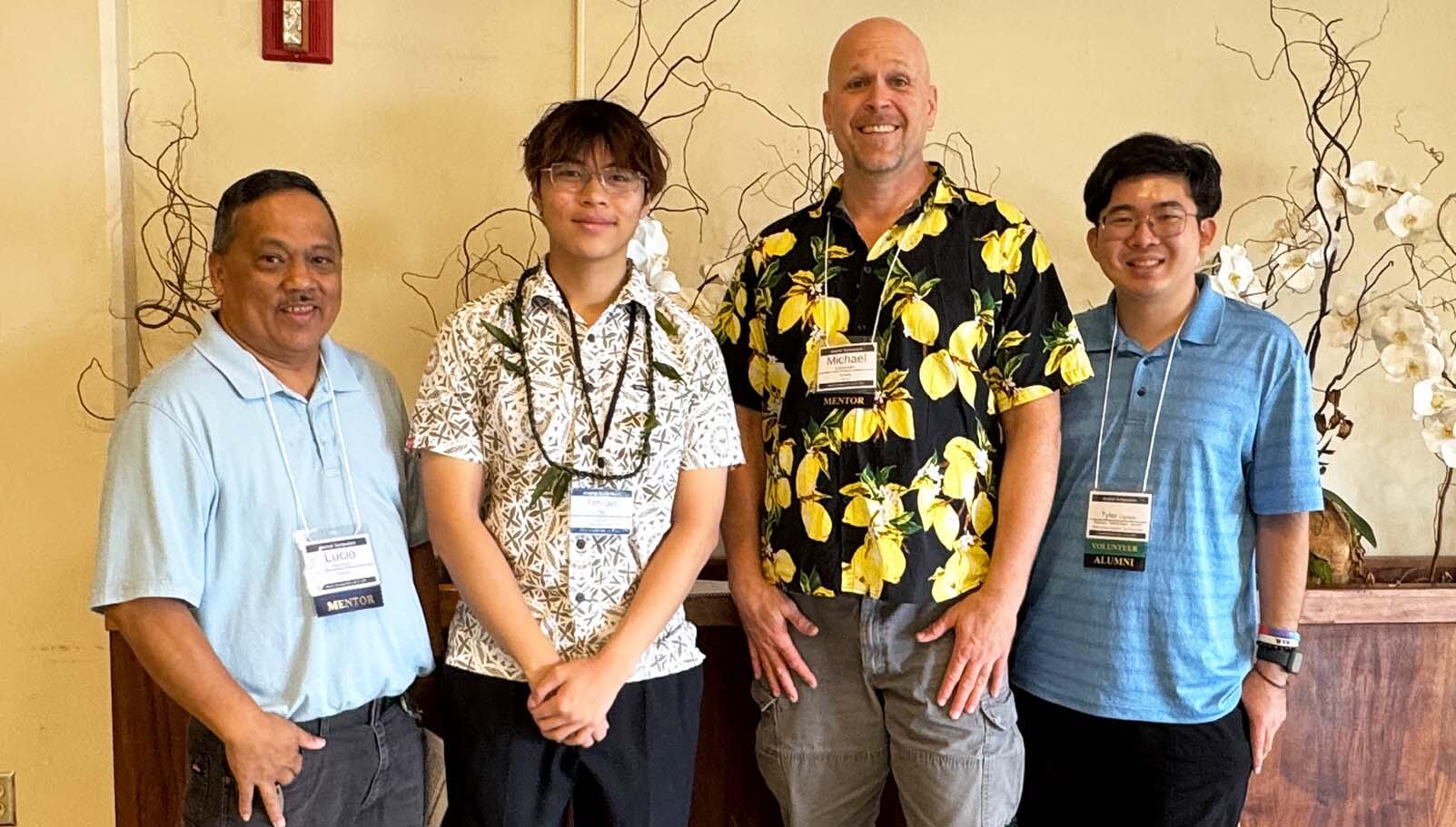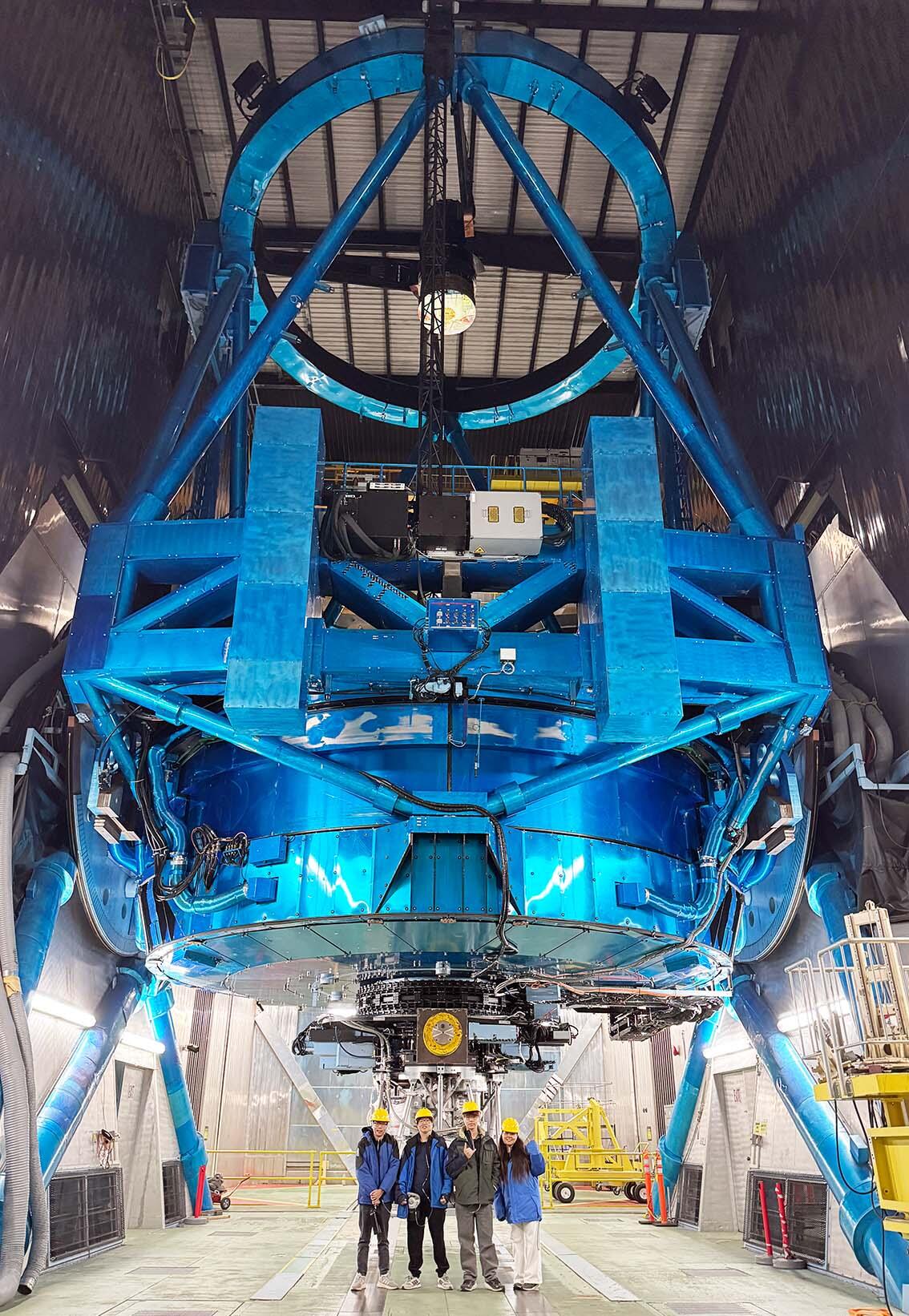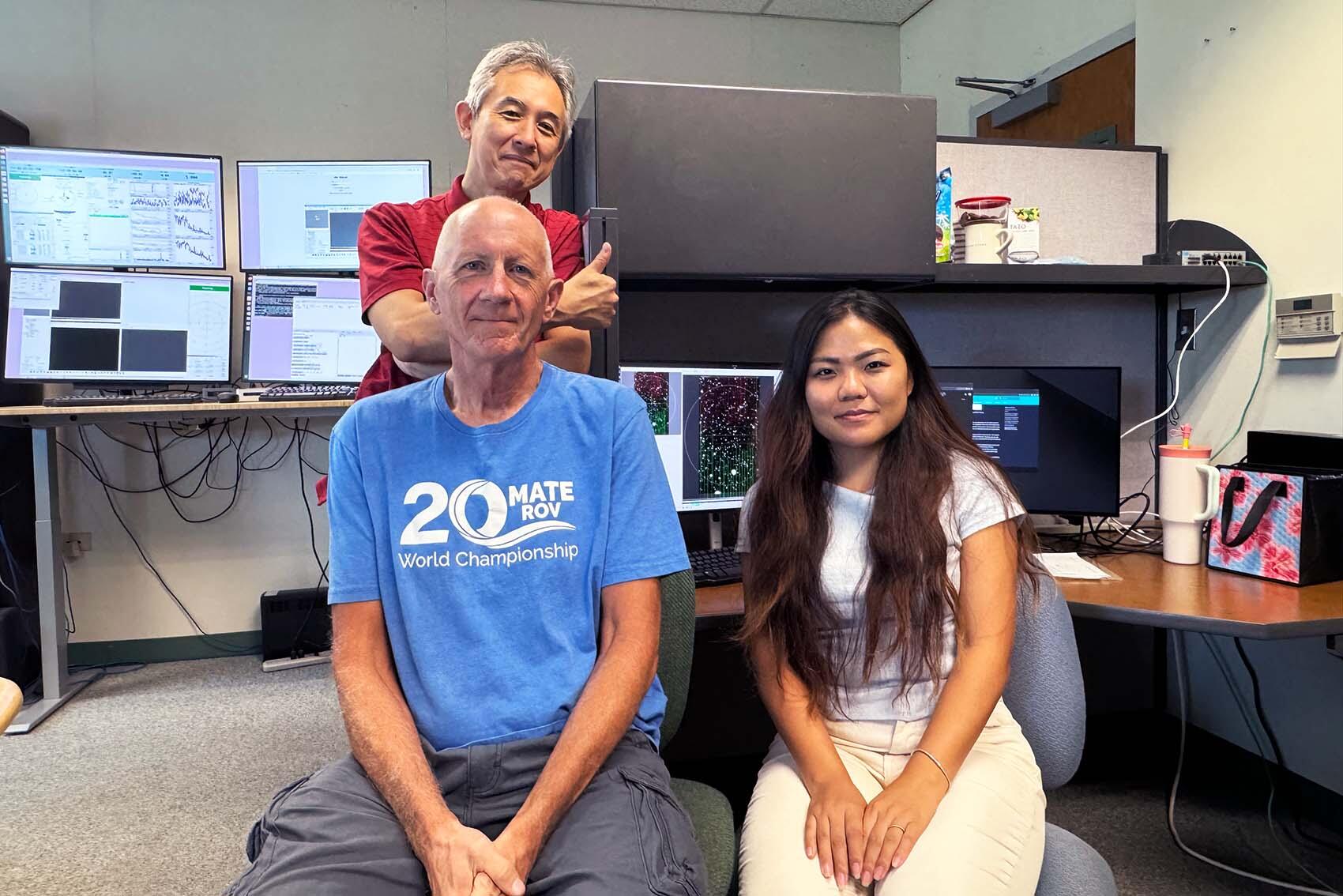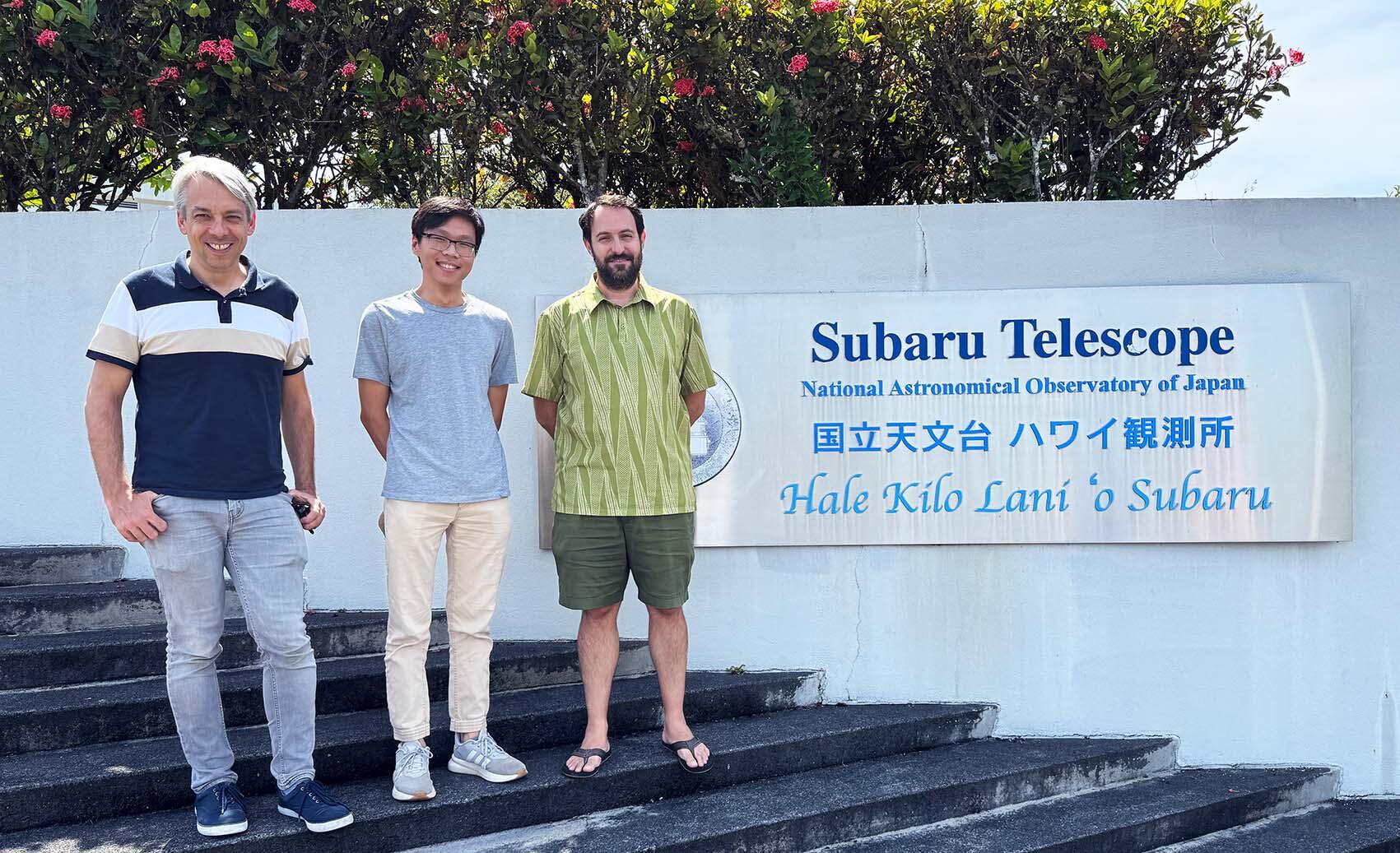The Akamai Internship Program, Hawai`i's premier STEM workforce development initiative, is now accepting applications for its 2026 summer cohort. The program offers Hawai`i college students the opportunity to gain hands-on, mentored research and engineering experience at leading observatories, technology companies, and research centers across the state.
Akamai continues to open pathways for students from Hawai`i to pursue rewarding careers in science, technology, engineering, and mathematics (STEM), with an emphasis on building a homegrown technical workforce that contributes to Hawai`i's innovation economy.
Subaru Telescope Hosts Four 2025 Akamai Interns
This past summer, four Akamai interns completed research and engineering projects at the Subaru Telescope on Maunakea, contributing to key areas of telescope instrumentation, data acquisition, and software development.

Figure 1: Group photo of the Akamai interns and their mentors related to Subaru Telescope. (Credit: NAOJ)
Tristan Ta, an Electrical Engineering major at the University of Hawai`i at Manoa, was inspired by family members who are also engineers. After building his first computer as a teenager, he was drawn to the abstract and challenging world of electrical engineering. During his Akamai internship, he prototyped a remote power system for Subaru Telescope's Prime Focus Spectrograph (PFS). "It was incredible to get real hands-on experience instead of just book work," says Ta. "This project opened my mind to future specialties and gave me more confidence." He encourages younger students to embrace trial and error as a vital part of learning.

Figure 2: (left to right) Lucio Ramos, Tristan Ta, Michael Lemmen, and Tyler Ogawa. (Credit: NAOJ)
Yannie Cheung, an Astronomy and Physics major at the University of Hawai`i at Hilo and graduate of Moanalua High School, analyzed the Subaru Telescope's secondary support structure ("spiders") to determine how their material composition affects temperature gradients and potential optical distortions. His work collecting thermal data will feed into an air-fluidity simulation to improve image correction and enhance the telescope's performance at Maunakea's summit region.

Figure 3: (left to right) Yannie Cheung and Sébastien Vievard from Space Science and Engineering Initiative (SSEI), University of Hawai`i. (Credit: NAOJ)
Minkyeong Kim, a Computer Science major at the University of Hawai`i Manoa, spent her summer upgrading the Multi-Object Infrared Camera and Spectrograph (MOIRCS)'s slit mask design software, migrating it from IDL to Python. Her work modernized the tool, improving its stability and expanding functionality for the telescope's scientists. "Updating the software to a modern programming language will enhance its reliability for future research," she notes.
Jia Jun Li, a Computer Engineering major at UH Manoa, designed and tested an accelerometer data acquisition system that integrates into the Subaru Telescope's control system to correct for image vibrations that affect high-contrast imaging systems particularly the Subaru Coronagraphic Extreme Adaptive Optics (SCExAO) instrument. Working on both hardware and software, he gained valuable experience in astronomy and adaptive optics during his internship. "It was an incredible opportunity to apply my skills in a real-world system that directly affects how astronomers view the Universe," he shares.
Building the Future of Hawai`i's STEM Workforce
Since its inception, the Akamai Internship Program has placed hundreds of Hawai`i students in technical internships that lead directly to high-value STEM careers in the islands. The program emphasizes mentorship, professional development, and building long-term connections between students and Hawai`i's science and technology industries.
Students studying engineering, computer science, physics, astronomy, and related disciplines are encouraged to apply. The 2026 program will run from June to August 2026.
How to Apply
Applications for the 2026 Akamai Internship Program are now open until January 23, 2026. For details and eligibility requirements, visit https://www.akamaihawaii.org.

Figure 6: The 2025 four Akamai interns guided by staff members at the Subaru Telescope. (Credit: NAOJ)




